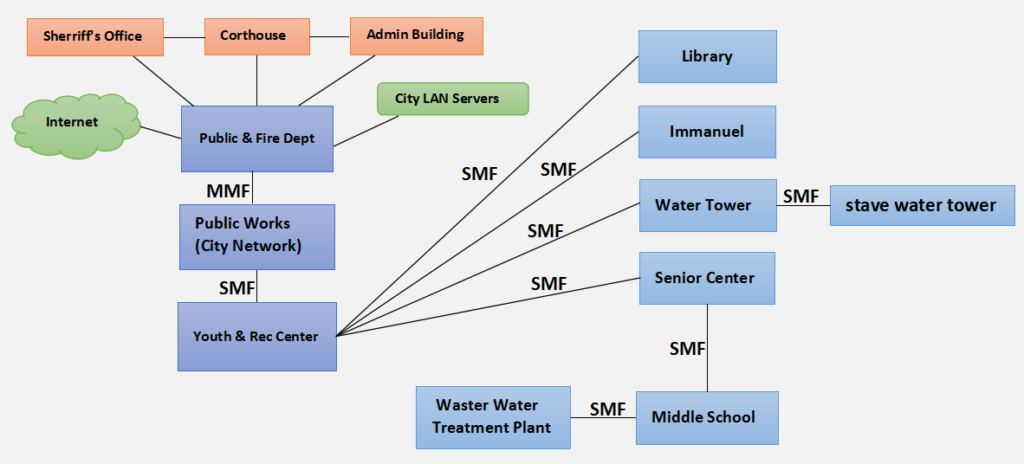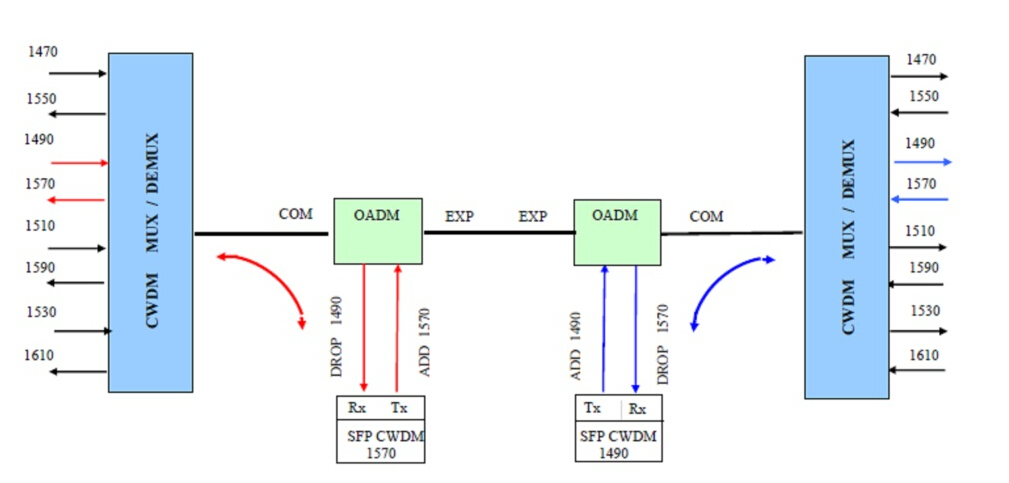Based on the same concept of using multiple wavelengths of light on a single fiber, CWDM and DWDM are two important technologies in fiber optical communications. As we all know, although the transmission distance of CWDM network is shorter than that of DWDM, it costs less and has the scalability to grow fiber capacity as needed. This article intends to give a simple introduction of components in CWDM networks and to explore some examples of CWDM network deployment cases.
CWDM Mux/Demux, which is based on the film filter technology, is the basic component in CWDM networks. It can combine up to 4, 8 or 16 different wavelength signals from different fiber extenders to a single optical fiber, or it can separate the same wavelengths coming from a single CWDM source. That’s why CWDM can extend existing fiber capacity.
A CWDM OADM is a device that can add (multiplex) and drop (demultiplex) channels on both directions in a CWDM network. It can add new access points anywhere in CWDM systems without impacting the remaining channels traversing the network. With this ability of OADM, the access points can be added to liner, bus, and ring networks, where the dual direction ring design provides redundant protected architecture.
Optical transceiver is a necessary element in optical networks. And CWDM optical transceiver is a type of module supporting CWDM network application with CWDM wavelengths. When connected with CWDM Mux/Demux, CWDM transceiver can increase network capacity by allowing different data channels to use separate optical wavelengths (1270nm to 1610nm) on the same fiber. And the common CWDM transceiver type is SFP, SFP+, XFP, XENPAK, X2, etc.
Description: there are five buildings (Sheriff, Courthouse, Admin, Police & Fire, & Public Works) connected via multimode fiber cables (MMF) or single mode fiber cables (SMF). These buildings are linked via multimode SFPs in an existing D-link switches to create one network for internal use of the city offices. Below is a simple graph to show the situation.

Requirements: the goal is to install a single mode fiber network in town to connect numerous buildings. Some of these buildings have access to the city LAN. The Public Works building need to connect with Youth & Recreation Center, Library, Immanuel Lutheran School and the Senior Center. And all these buildings should have unfiltered Internet. Besides, the Waster Water Treatment Plant should be connected passing through the Senior Center. All these services are achieved using CWDM technology.
Solution: according to the requirements, this is a CWDM networks with several buildings to connect with. Here is the solution diagram.

In the diagram above, we can see there is an 8CH CWDM Mux/Demux connected with the switches. According to the requirements, Youth & Recreation Center, Library, Immanuel Lutheran School and Senior Citizen Center should be connected with the Public Works and need unfiltered services. Therefore, a 4CH CWDM OADM is placed after the CWDM Mux/Demux. Then the four wavelengths will be drop and into the four buildings. In addition, another CWDM OADM is deployed in Senior center to connect the Waster Water Treatment Plant, to meet the requirement. And each site also needs to use CWDM optical transceivers.
Description: on site A, there are three Ethernet switches and a T3 router. And their working wavelengths 1470nm, 1490nm, 1510nm, 1530nm and 1610nm. Other three sites B, C, and D also have three Ethernet switches. And a T3 router is in site E. As the following figure shows.

Requirements: Considering the cost, all the wavelengths should be transmitted on a single fiber using CWDM technology.
Solution: according to the requirements, here is a simple diagram showing the solution.

In order to save cost, a 4CH CWDM Mux/Demux is used to multiplex four wavelengths (from three switches and one router) into one single fiber. At the first site B, a 1CH CWDM OADM is installed to remove one wavelength which is associated with network B. And other three sites are the same—dropping one wavelength associated with corresponding switch or router.
This article mainly introduces two CWDM network deployment examples. All the components like the CWDM Mux/Demux, CWDM OADM and CWDM transceiver are available in FS.COM. If you are interested in them, please contact us via sales@fs.com.
Related article:Differences between CWDM and DWDM

